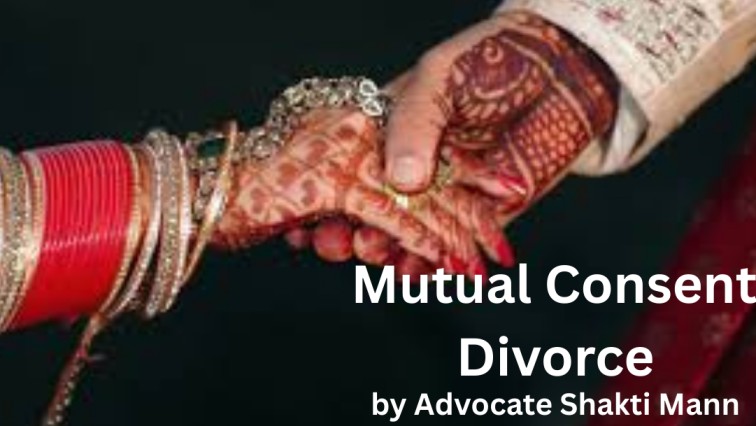Table of Contents

This article mainly focuses on Mutual Consent Divorce under the Hindu Marriage Act and its procedure.
Introduction
Marriage under Hindu law is looked upon as a sacred bond that not only unites two people but also two families. It is a lifelong institution where wife and husband agree to stand by one another during every stage of life. The Hindu Marriage Act, 1955, was passed to give the institution the framework of law so marriages are solemnized with decency and are legally recognized.
But even though marriage is sacrosanct, all marriages do not succeed in serving their function. Differences, disputes, or circumstances between the spouses may render it impossible for the spouses to live together as husband and wife. The law then steps in and grants a legal remedy—divorce. Divorce under the Hindu Marriage Act allows the marital bond to be undone when the union has irretrievably disintegrated.
Mutual Consent Divorce
Mutual consent divorce is the simplest and most peaceful means for both wife and husband to dissolve their marriage. It can be acquired only by the free consent of both parties. If, after one year of marriage, the husband and wife realize that they cannot co-exist because of insoluble problems and decide to live separately by mutual consent, mutual consent divorce becomes the most convenient and easiest legal resort.
Procedure of Mutual Consent Divorce:
Mutual consent divorce procedure is categorized into three steps:
-
First motion
-
Cooling-off Period
-
Second motion
First Motion
When the husband and wife mutually agree to terminate the marriage, they jointly present a petition under Section 13B (1) of the Hindu Marriage Act before the Principal Judge of the Family Court by their advocate. The court sets a date, and on that date, the two spouses are required to appear in person and orally reaffirm their consent in the presence of the Hon’ble Court. This process is referred to as the First Motion.
Legal Requirement: The couple has to have been living apart for a year prior to seeking the petition, and the court verifies that reconciliation is not possible.
Cooling-Off Period
Once the First Motion is filed, the court automatically grants a six-month cooling-off period to enable the couple to reconsider their choice. It acts as a deterrent against hasty divorces and provides spouses with an opportunity to perhaps get back together.
Supreme Court Discretion: According to the Supreme Court in Amardeep Singh Vs. Harveen Kaur, the court can waive this cooling-off period where it is evident there is no chance of reconciliation and where other options for rehabilitation are available.
Second Motion
Once the cooling-off period is over, the spouses are required to file a Second Motion petition under Section 13B (2) of the Hindu Marriage Act to affirm their mutual ongoing consent for divorce. Both of them are once again required to appear before the court in person to affirm their joint decision to terminate the marriage. The court then issues the decree of divorce, declaring the marriage to be at an end.
Other Key Points
Court Appearance: The physical appearance of both the spouses in hearings is necessary to confirm that the consent is free, voluntary, and not one that has been given under any coercion or fraud.
Effects in Law: Spouses are free to remarry legally after the divorce decree, but remarriage can be done only after 90 days from the date of the divorce decree according to the Hindu Marriage Act.
Documentation: The mutual petition contains information regarding unsettled issues, division of property, and child arrangements, if any, so that all the issues are settled lawfully before the divorce.
Advantages: Mutual consent divorce is quicker, less confrontational, and spares people from excessive litigation compared to contested divorces.
Lastly:
Mutual consent divorce under the Hindu Marriage Act is a respectable and legal way out for couples who both agree that they cannot carry on with their marriage. It reconciles the sanctity of marriage with reality in life, allowing for a peaceful parting of spouses while safeguarding their legal rights. For couples looking at this option, seeking advice from an experienced legal expert can make the process go smoothly and legally.
